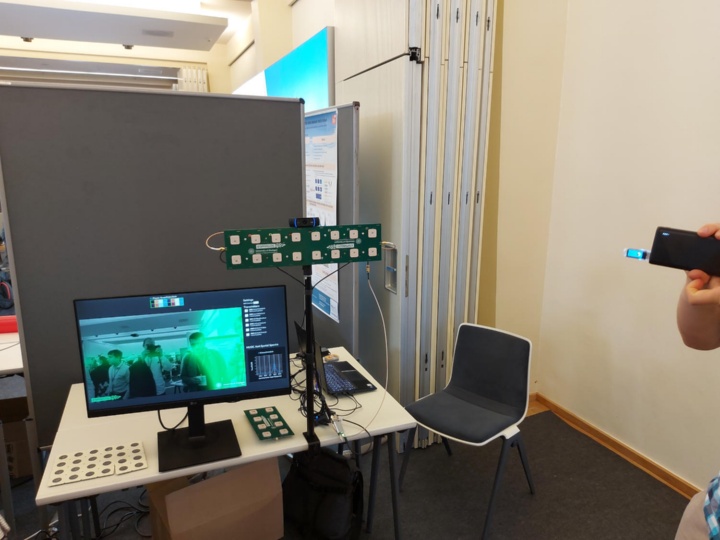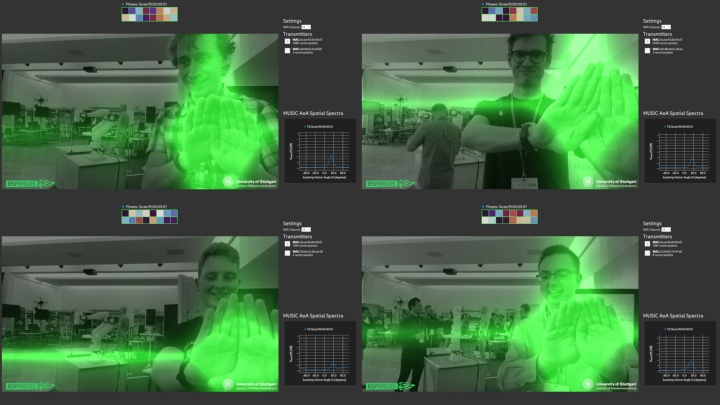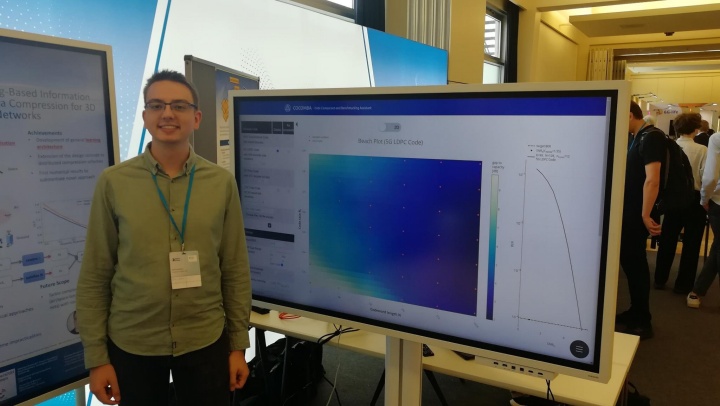While 5G networks are still being rolled out by mobile network operators across the globe, the wireless telecommunications research community has started to come up with visions, technologies and prototypes for 6G, the mobile network standard expected to supersede 5G around 2030. To ensure that European and German research institutions and private companies continue to play a central role in mobile network standardization efforts, the German Federal Ministry of Education and Research (BMBF) is funding a comprehensive 6G research program managed by the 6G Platform Germany. Our institute is taking part in two research projects under this umbrella, called Open6GHub (our contributions in a nutshell: physical layer / coding aspects, channel measurements and channel modelling) and KOMSENS-6G (our contributions in a nutshell: channel measurements for Joint Communication and Sensing, Channel Charting).
ESPARGOS
At the Berlin 6G Conference, we demonstrated our low-cost WiFi Channel Sounder (i.e., a receiver antenna array) called "ESPARGOS" that can, among other applications, be used to perform WiFi-based positioning based on channel charting, human behavior recognition, sensing or performance / channel modelling. ESPARGOS was developed jointly with students as part of thesis projects.
The objective of the setup at the event was to make electromagnetic waves visible: The spatial power spectrum of the transmitter was overlayed on top of a camera image captured by a webcam on top of the antenna array. By moving the transmitter, visitors could see how the overlay moves concurrently and experience the varying channel conditions for different transmitter positions.
On a side note, ESPARGOS is also able to locate sufficiently strong reflectors (such as hands), demonstrating passive sensing capabilities. The image above shows some screenshots of the prototype, with our hands serving as reflectors.
CoComBA
The second exhibition by the INÜ at Berlin 6G Conference is the interactive website CoComBA, the code comparison and benchmarking assistant. Its purpose is to visualize the performance of channel codes and their decoders over a wide range of code lengths and rates using the novel "beach plots" and "island plots". This way, one can assess shortcomings of currently used channel codes. For 6G, we envision a unified coding scheme, showcasing flexibility, high error-correction capability and also energy efficient, low latency decoding. Using CoComBA, one can compare potential code designs to the state of the art.





